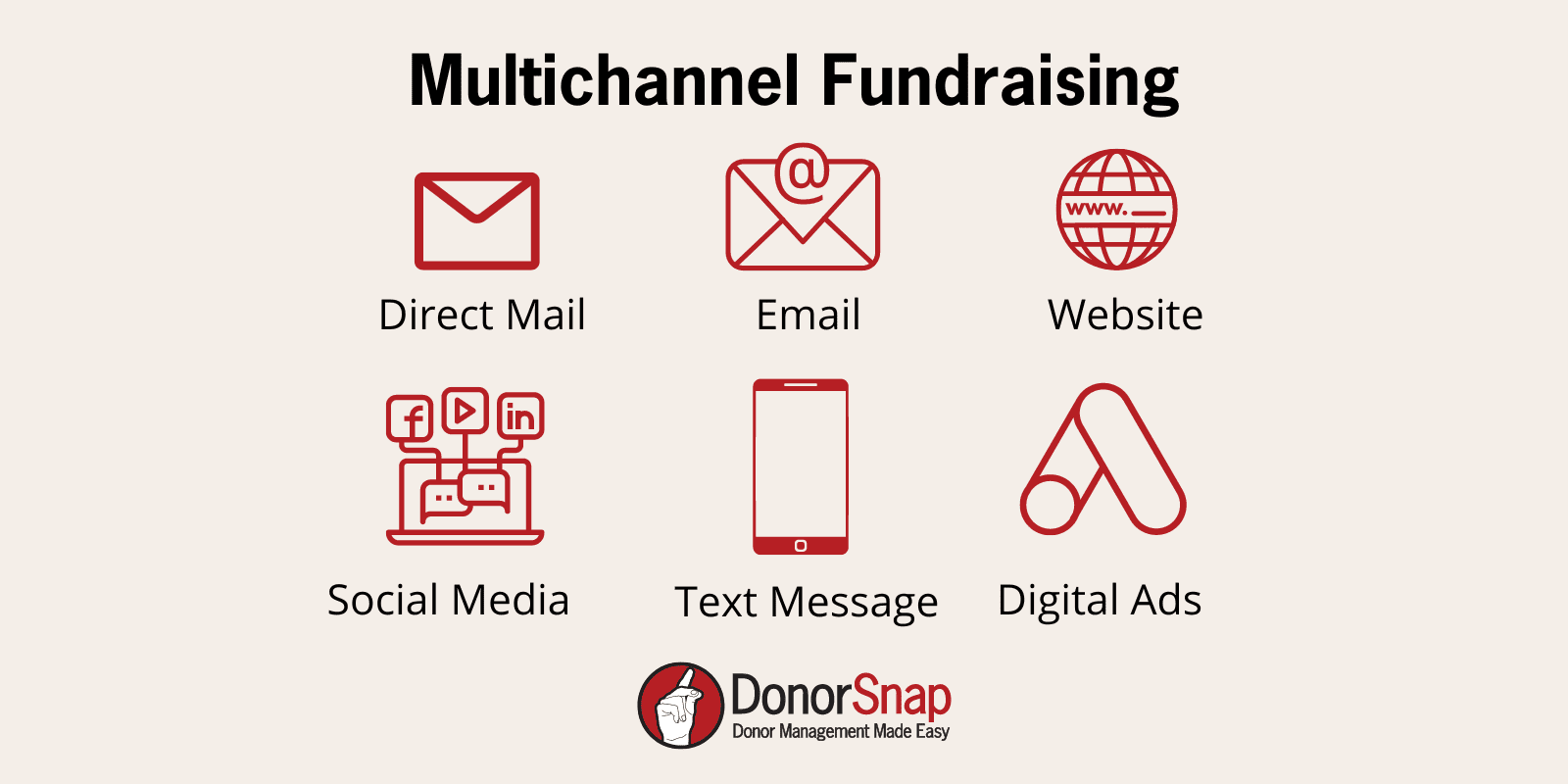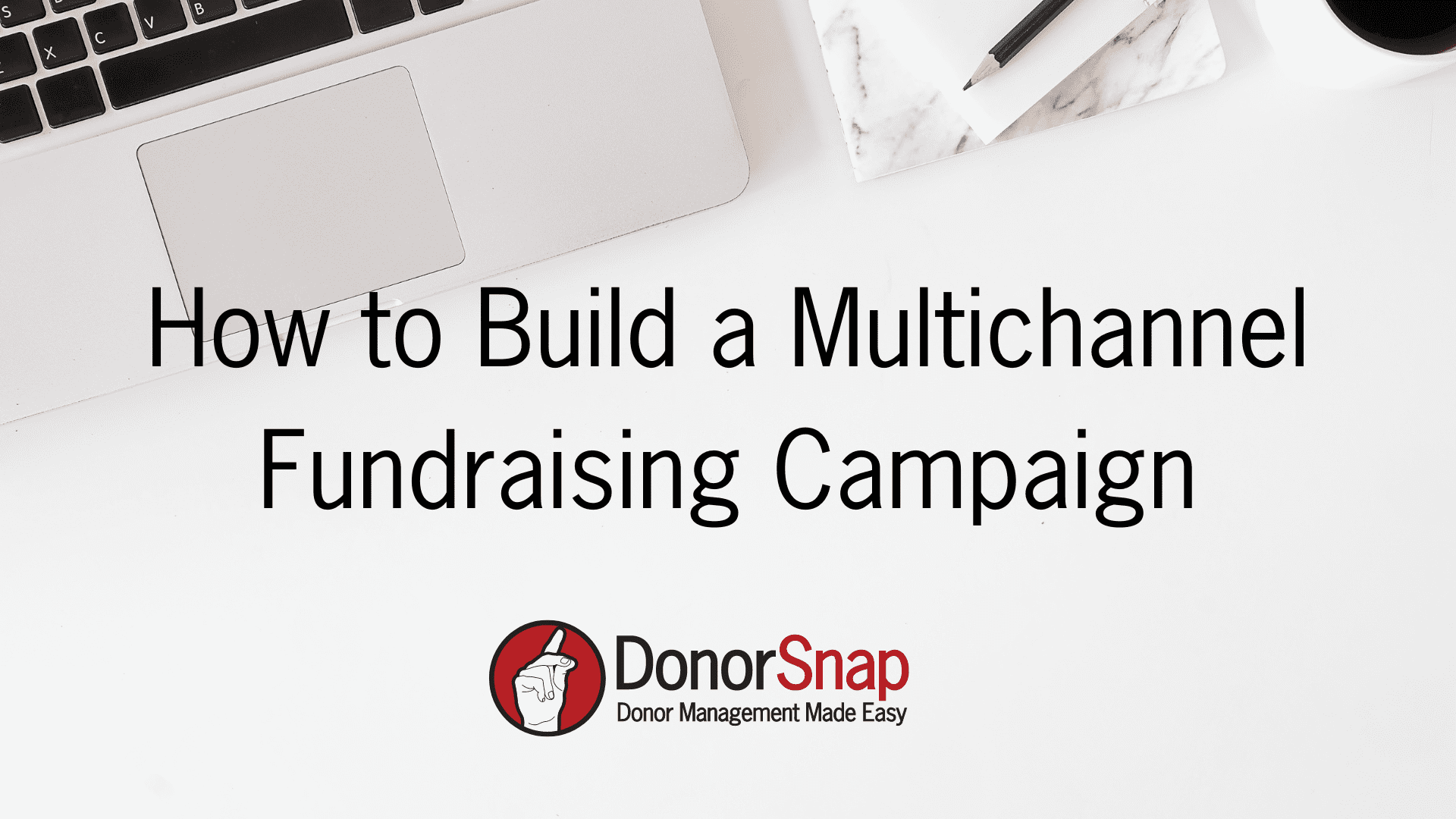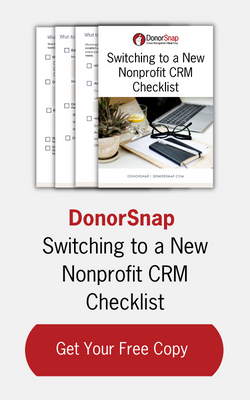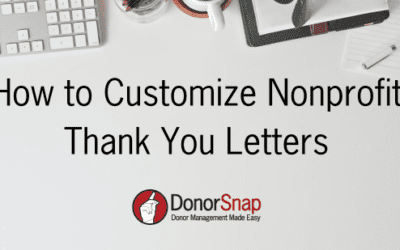Multichannel fundraising campaigns are a great way to elevate your nonprofit’s fundraising. When you reach out to your donors with the same message through multiple channels, their response rate increases. According to one case study, donors who got both direct mail and email (with the same message/ask) saw a 60.5% lift in response rate.
So what is multichannel fundraising? Why does it work? And how can your nonprofit get started? Keep reading to find out!
What are Multichannel Fundraising Campaigns?
Multichannel fundraising is the use of multiple communication channels to reach your donors and prospects. Nonprofit organizations can benefit from multichannel fundraising by reaching more people. It also benefits the donors by reaching them through their preferred methods. Multichannel fundraising can include any combination of communication channels such as direct mail, email, social media, text message (SMS) campaigns, events, and so on.
Why Do Multichannel Fundraising Campaigns Work?
Chances are you will not be able to reach your entire mailing list through one channel. Multichannel fundraising works well because it increases the chances of your supporters hearing your message. Casting your net wider with multiple touch points ensures your message is received. In addition, people usually need to hear a message 7 times before taking action. The use of multiple communication channels helps you get the message out to more people. It also offers those additional touch points in a more subtle way.
How to Build a Multichannel Fundraising Campaign
Now that you know what multichannel fundraising is and why it works, it’s time to get started. We have outlined the steps your nonprofit can take to set up a successful multichannel fundraising campaign.
Know What Channels To Include in Multichannel Fundraising

You might not have access to every single channel and that is okay. The important thing is to take advantage of the ones you do have. Do you have a print mailing list and an email list? Then you already have multiple channels of communication available. Below are the different channels you can incorporate into your multichannel fundraising campaign.
Website
Your nonprofit’s website is one of the most important communication channels. This is where all of the information about your nonprofit lives. Also, this is where your online donation forms are. Many of your other communication channels in your campaign will direct back to your website. For this reason, it is important your nonprofit’s website is up to date and easy to navigate.
Nonprofit Website Tips & Statistics
- 68% of donors worldwide trust websites & email addresses that use the .org domain extension the most
- Make your donation page/form easily accessible from your homepage
- Use DonorSnap’s Responsive Forms Tool to collect online donations
Email is one of the most affordable and accessible ways to reach your donors. If you use DonorSnap you can take advantage of our built-in mass email system. We also have an integration with Constant Contact if you are interested in more design options for your emails. Make sure you keep your email list up to date and follow CAN-SPAM laws to ensure you are compliant with your emails.
Nonprofit Email Tips & Statistics
- Email-based marketing and promotional campaigns generated 28% of all online nonprofit revenue in 2017
- Keep your email list clean – high bounce rates will negatively affect your sender reputation and make it harder to get into the inbox of all recipients
- Use DonorSnap’s built-in Mass Email Tool or Constant Contact Integration to send emails
Social Media
Social media can be a great addition to your multichannel fundraising campaigns. For one, you can reach younger demographics on social media. Also, you can get really creative with how you use social media for your campaigns. This is your opportunity to introduce stories and images that will complement your overall campaign. Be sure to follow social media best practices for nonprofits when using social media in your campaigns.
Nonprofit Social Media Tips & Statistics
- 29% of online donors say that social media is the communication tool that most inspires them to give
- Use social media to add more visuals and storytelling into your overall campaign
- Tools like Buffer and Later can help you organize and schedule your social media content as part of your campaign
HOT Tip: Take advantage of giving days focused around social media like GivingTuesday. GivingTuesday takes place the Tuesday after Thanksgiving. Learn more about launching a successful GivingTuesday Campaign here.
Direct Mail
Direct mail is not dead and can still be one of the most effective communication channels for your nonprofit. Most nonprofits will kick off their multichannel campaigns with a print mailing. This can help grab your audience’s attention and let them know the campaign has launched. From there you can use the other channels for more subtle reminders.
Direct Mail Tips & Statistics
- Direct mail has a more significant emotional impact than digital ads, resulting in a stronger recall up to one week later
- Most nonprofits use direct mail for the initial ask/push of your campaign. Include remittance envelopes or donation forms for easy return and a link to your donation page for those who prefer to give online!
- Build your print mailing lists in DonorSnap’s DataMiner Platinum
Text (SMS) Messaging
Text message campaigns may feel new to you, but they are here to stay. You can send text message campaigns directly out of DonorSnap. All users need to do is set up a Twilio account. Learn how to set up a Twilio account here. Text message campaigns are great for last-minute messages or urgent messages that require a fast response.
- Text messages get 12x more response rate than phone calls and emails
- Use text messages for more urgent messages in your campaigns. Think about using them for the last push with a link to your donation page.
- You can send SMS campaigns directly from DonorSnap when you sign up with a Twillio account. Learn more about sending text messages from DonorSnap here.
Digital Ads
Digital ads include any online advertising. This includes Google Ads, Facebook Ads, LinkedIn Ads, MSN ads, and so on. Google and Facebook are the two most popular platforms for digital advertisements. Digital ads might not be necessary for your organization, especially for smaller nonprofits with a more localized support group.
- About 60% of nonprofits had advertising budgets, and the median budget was about $12,000.
- Google Ads and Facebook Ads are the best options for online advertising for nonprofits.
- Learn more about Google Ad Grants which will provide qualifying nonprofits 10K a month for Google Ads.
Segment Your Audience
Segmentation is important in fundraising. If you are effectively capturing donor data in your nonprofit CRM, you should be able to easily segment your lists. Once you have chosen the different channels for your fundraising campaign, you should decide who you will contact through each channel. It is important to have permission from your contacts to reach them through various channels. You should never text or email someone unless you have their permission to do so. Also, asking your donors their preferred method of communication will improve the overall donor experience.
Tailor Messages to work with different channels

When building a campaign, you will want to have an overall message and goal. Once you have the details of your campaign ironed out, you can start distributing it among the different channels. You need to tailor your campaign messages to the different channels. For example, you might have one long print mail piece with a lot of detail on it. Then your email can be a summary of the print piece with links back to your website. Your social media posts can take that content and break it down further into shorter messages with the use of visuals.
Putting it all Together
Once you understand the different channels and what they are best for it is time to build your campaign. You should decide on your campaign’s message and then create content for the different channels. Make sure you have segmented your lists and keep close track of who is getting what message. Hint: You can easily track this in DonorSnap by having one campaign and various appeals. For example, your campaign may be Annual Fund 2022. Your different appeals could be Annual Fund 2022 October Mailing, Annual Fund 2022 Email One, Annual Fund 2022 Social Media, and so on.
Now that you have chosen your channels, created your content, and segmented your lists it is time to schedule your campaign. Make sure you space out your messages. Most nonprofits will send their big print mail campaign first, and then use the digital channels as reminders and additional touch points. Keep track of your campaign as it progresses. Measuring and testing the different channels will help you tweak your campaigns in the coming years.




